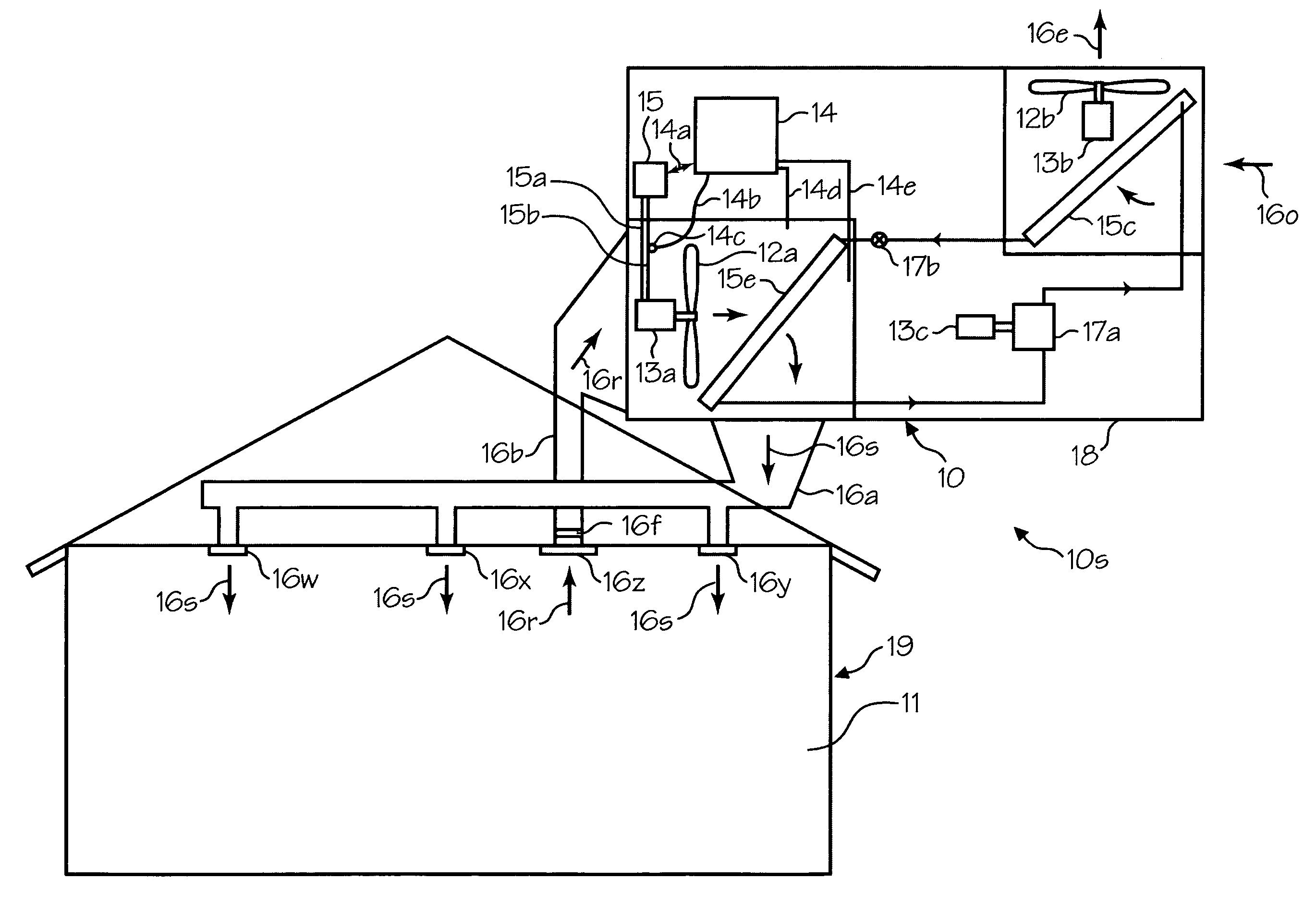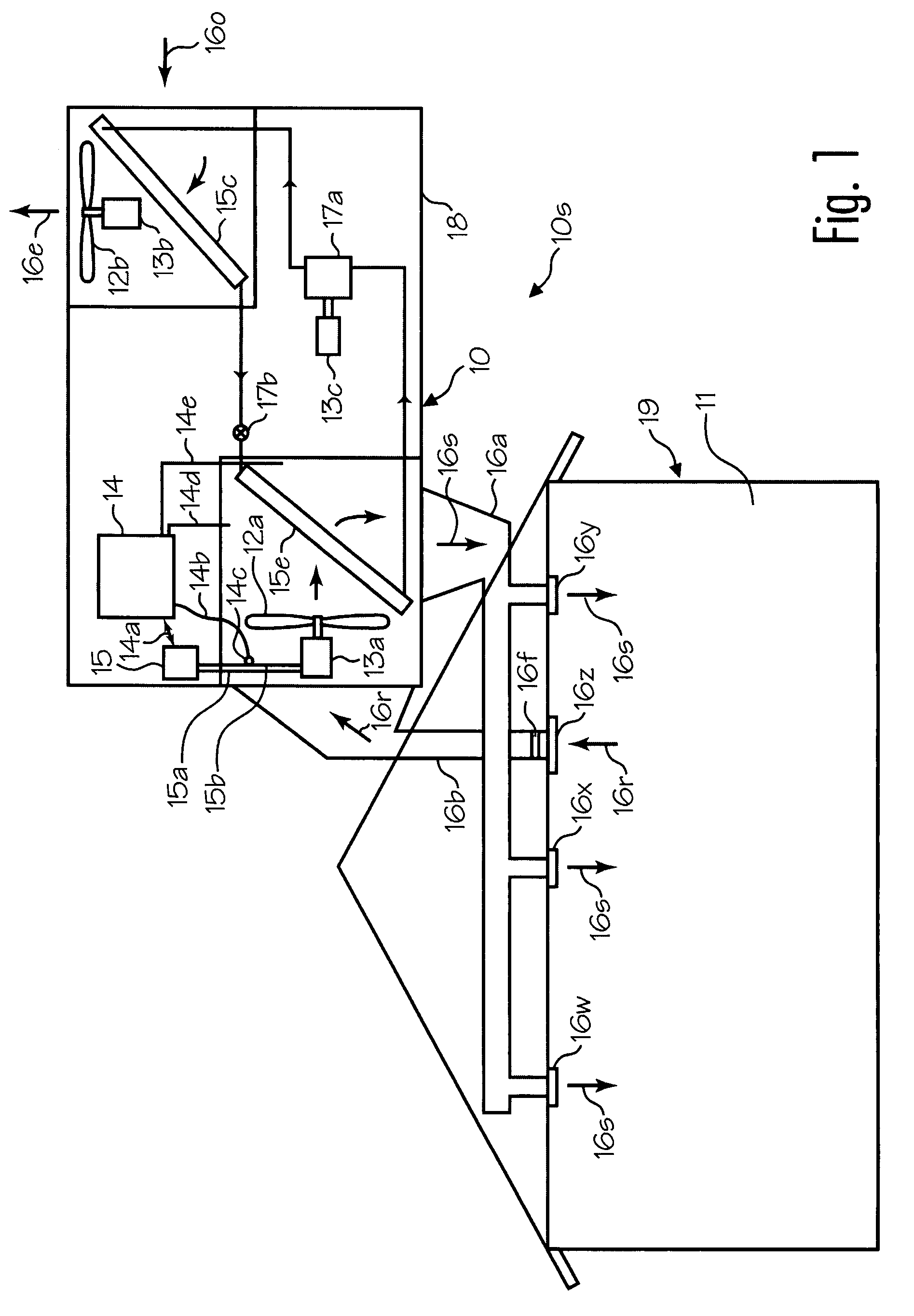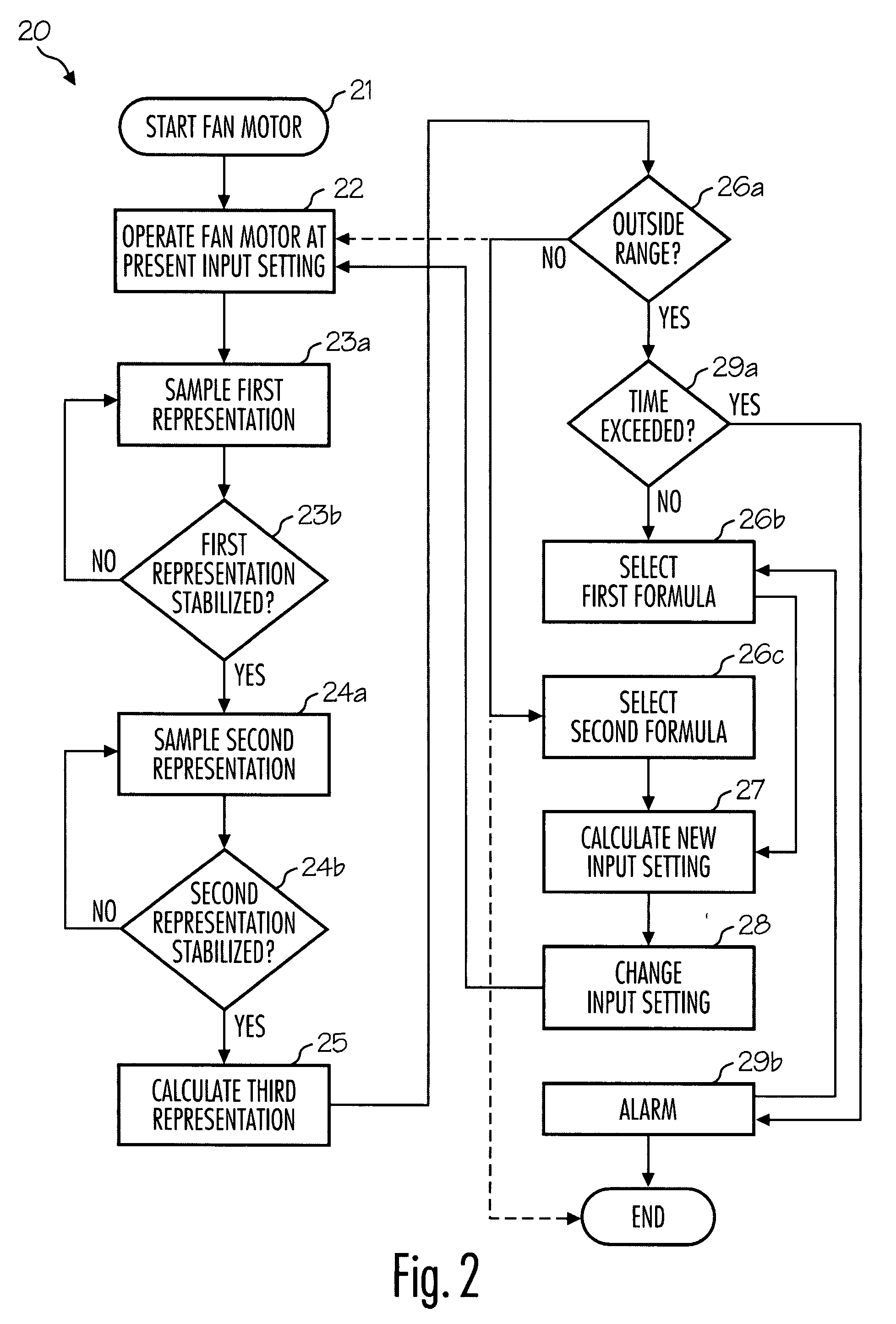Ventilation airflow rate control
a technology of airflow rate and ventilation air, which is applied in ventilation systems, lighting and heating apparatus, heating types, etc., can solve the problems of reducing energy efficiency, reducing energy consumption, and reducing noise, so as to reduce energy consumption, reduce noise, and avoid insufficient or excessive airflow. the effect of the ra
- Summary
- Abstract
- Description
- Claims
- Application Information
AI Technical Summary
Benefits of technology
Problems solved by technology
Method used
Image
Examples
Embodiment Construction
[0006]This invention provides, among other things, air handling units for ventilating an at-least partially enclosed space, air-conditioning units, methods of controlling an airflow rate within a ventilation system, and methods of providing more-constant performance of air conditioning units, as examples. Different embodiments adjust or vary speed or torque of a blower or fan motor based on inputs such as electric current of the motor or pressure (e.g., absolute or differential pressure) within the system, and speed or torque of the motor. Various embodiments of the invention provide as an object or benefit that they partially or fully address one or more of the needs, potential areas for improvement or benefit, or functions described herein, for instance. Specific embodiments provide as an object or benefit, for instance, that they at-least partially provide for control of airflow rates within ventilation systems, provide HVAC equipment, systems, and methods that provide for some d...
PUM
 Login to View More
Login to View More Abstract
Description
Claims
Application Information
 Login to View More
Login to View More - R&D
- Intellectual Property
- Life Sciences
- Materials
- Tech Scout
- Unparalleled Data Quality
- Higher Quality Content
- 60% Fewer Hallucinations
Browse by: Latest US Patents, China's latest patents, Technical Efficacy Thesaurus, Application Domain, Technology Topic, Popular Technical Reports.
© 2025 PatSnap. All rights reserved.Legal|Privacy policy|Modern Slavery Act Transparency Statement|Sitemap|About US| Contact US: help@patsnap.com



